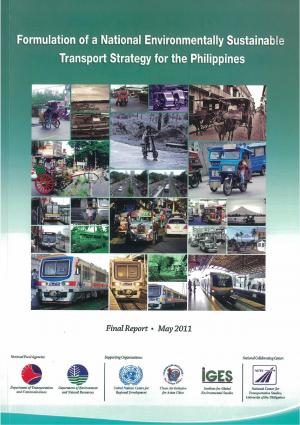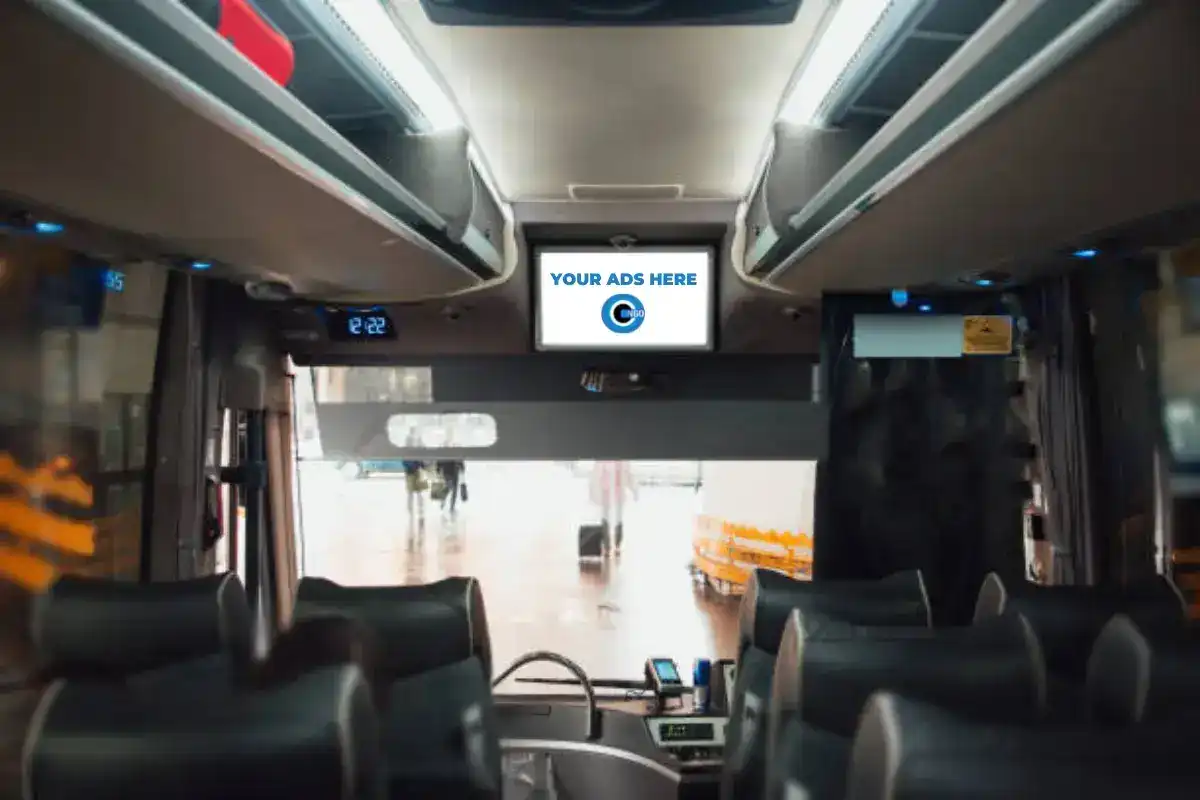Increase Your Company with Transit Advertising Philippines
Increase Your Company with Transit Advertising Philippines
Blog Article
Comprehending the Function of Transportation Marketing in Enhancing Brand Exposure and Customer Interaction
Transportation advertising has actually arised as an essential element in the advertising and marketing landscape, providing special possibilities for brand names to boost their exposure and engage consumers effectively. With the capability to get to a restricted and varied target market throughout their day-to-day commutes, these advertising techniques are not simply concerning visibility; they are concerning producing purposeful connections with possible consumers. As we check out the complex benefits and innovative techniques within transportation marketing, it ends up being important to take into consideration exactly how these aspects collectively influence consumer assumption and actions, questioning concerning their long-lasting impact on brand name loyalty.
Definition of Transportation Advertising And Marketing
Transit advertising describes the practice of advertising products, services, or brand names with ads placed around public transport systems. This kind of advertising incorporates a range of positionings, including posters on buses and trains, digital screens at transit stations, and wraps on the outside of automobiles. It aims to get to a varied target market, utilizing on the high foot traffic associated with public transportation.
Transit advertising is strategically positioned to capture the interest of travelers, that often invest significant time taking a trip or waiting. By incorporating advertisements into the everyday routines of individuals, brand names can create a long-term impression and foster brand name acknowledgment. The medium is specifically efficient in metropolitan atmospheres, where public transport is a key mode of travel.
Furthermore, transit advertising and marketing can assist in local targeting, enabling services to reach particular demographics based upon transit courses and terminal places. As urban populations expand and making use of public transport increases, this advertising and marketing method has acquired prestige as a vital component of integrated marketing techniques. The vibrant nature of transportation marketing, combined with its capability to engage customers in a captive environment, emphasizes its importance in contemporary advertising and marketing techniques.
Advantages of Transit Advertising
The efficiency of transportation advertising lies in its capability to deliver a plethora of advantages to brand names seeking to improve visibility and interaction. One of the main advantages is the comprehensive reach it provides; transportation ads can effectively target varied demographics throughout urban locations, reaching both travelers and pedestrians alike. This wide direct exposure considerably boosts brand name awareness.
One more advantage is the high frequency of impressions. As transportation lorries travel along recognized paths and stop at multiple places, they develop repetitive exposure that reinforces brand name messages. This regularity cultivates experience, which is essential in consumer decision-making.
Transportation advertising and marketing is also affordable compared to various other media platforms. Provided its large reach and potential for high perceptions, brand names typically experience a reduced expense per thousand impacts (CPM), maximizing their advertising and marketing spending plan.
Additionally, transit advertisements can create a sense of community connection. By aligning with regional transportation systems, brands can resonate with regional target markets and promote a sense of neighborhood pride. This localized technique improves brand commitment and involvement, making transportation marketing a compelling option for businesses intending to solidify their existence in the market.

Efficient Strategies for Transportation Projects
To take full advantage of the effect of transportation campaigns, brands must leverage calculated planning and execution customized to their target market. First, determining the group characteristics of the audience utilizing public transportation is vital. This permits brand names to develop customized more tips here messaging that reverberates with potential customers.
Following, choosing the appropriate transit tools is essential. Whether utilizing bus wraps, metro posters, or electronic screens, each medium has distinct advantages that can enhance exposure. For example, lively visuals on bus covers can stand out, while digital ads can be upgraded often to mirror prompt promos.
In addition, incorporating a natural branding technique across transit systems ensures uniformity and enhances the brand's identity. Using unforgettable taglines and distinctive designs will enhance brand name recall among travelers.
Finally, timing is an essential consider performing successful transit projects. Releasing campaigns throughout optimal traveling hours or neighborhood occasions can substantially enhance presence and interaction. By using these approaches, brand names can effectively harness the potential of transportation advertising, fostering greater recognition and connection with their target audience. Ultimately, a well-executed transit campaign can drive here considerable development in brand name exposure and consumer interaction.

Determining Effect and Involvement
In examining the performance of transportation marketing campaigns, precise dimension of impact and involvement is vital for brand names seeking to maximize their advertising and marketing strategies. Metrics such as reach, frequency, and perceptions give foundational information to analyze presence. Assessing these elements assists figure out just how numerous prospective consumers are revealed to the promotions throughout their daily commutes.
Involvement can be more assessed with consumer communications, such as website traffic, social media sites points out, and straight reactions to calls-to-action featured in the advertisements. Making use of devices like QR codes or one-of-a-kind URLs can promote monitoring of consumer behavior straight linked to transit projects. Studies and feedback systems additionally act as important approaches to collect qualitative data on consumer perceptions and recall of the ad.
Moreover, progressed analytics and attribution versions can associate transit exposure with subsequent buying actions, offering insights into the roi. By using an extensive technique that integrates measurable and qualitative actions, brand names can develop a nuanced understanding of their transportation advertising influence. Ultimately, this data-driven technique enables brands to improve their campaigns, guaranteeing they reverberate efficiently with target market and enhance overall brand name exposure.
Case Researches of Effective Campaigns
Successful transit marketing campaign work as engaging examples of just how effective approaches can boost brand name exposure and interaction. Transit Advertising Philippines. One notable instance is the "I Love New York" project, which transformed the city's picture and brought in numerous visitors. By using metro advertisements, signboards, and bus covers, the project developed a solid, cohesive brand name identification, causing a substantial uptick in tourism and local service patronage
An additional excellent campaign is Coca-Cola's "Share a Coke" effort, which leveraged transit advertising to customize the brand name description experience. By featuring preferred names on advertising products throughout various transportation platforms, Coca-Cola promoted a much deeper emotional connection with customers, motivating them to share their experiences on social networks.
In addition, the "Got Milk?" campaign successfully used mass transit advertisements to get to a wide audience, enhancing the message of the relevance of milk in a well balanced diet regimen. The campaign saw a measurable boost in milk consumption in target demographics.
These case researches show that when implemented thoughtfully, transit advertising and marketing can significantly improve brand name exposure, foster customer interaction, and drive measurable results, demonstrating its vital function in modern advertising techniques. - Transit Advertising Philippines
Verdict
In verdict, transit marketing offers as a crucial device for enhancing brand name presence and cultivating consumer involvement. By using strategically positioned promotions within public transport systems, brand names can successfully get to diverse target markets and enhance acknowledgment through consistent exposure. The execution of targeted messaging and cutting-edge strategies even more enhances the effect of transportation projects. Eventually, the capability to gauge interaction and analyze successful case researches emphasizes the efficiency of transit marketing in driving brand name loyalty and consumer communications.
Transportation marketing has actually emerged as a critical element in the marketing landscape, using special opportunities for brands to raise their exposure and engage customers successfully.Furthermore, transit advertising and marketing can help with local targeting, enabling organizations to reach certain demographics based on transit courses and terminal areas.In assessing the effectiveness of transportation advertising and marketing projects, accurate dimension of effect and engagement is important for brand names seeking to enhance their advertising techniques.Effective transit marketing projects serve as engaging examples of exactly how effective strategies can boost brand visibility and interaction.In verdict, transportation advertising and marketing offers as a vital device for improving brand presence and cultivating customer involvement.
Report this page